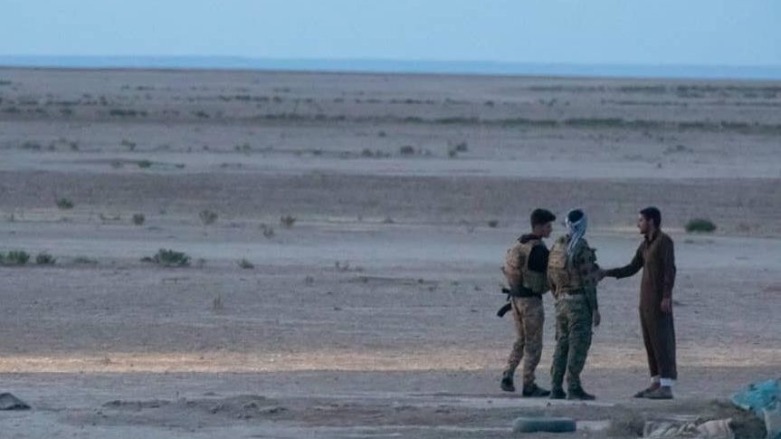Backed by coalition forces, Kurdish-led SDF launches operation against ISIS near Iraqi border
“ISIS has created a transit zone in the semi-steppe area between Iraq and Syria” that it uses as a “safe haven and as territory to network its operatives between Iraq and Syria,” analyst Nicholas Heras explained to Kurdistan 24.

ERBIL (Kurdistan 24) – The US-backed Syrian Democratic Forces (SDF) on Sunday announced that they, along with the anti-ISIS coalition, launched a four-day operation against terrorist cells in Deir al-Zor province near the Iraqi border.
"Our forces and the Global Coalition forces to fight ISIS began this morning a large-scale military and security operation in the Wadi Al-Ajij area in the northern countryside of Deir Ezzor,” the SDF's media center said in a statement.
The SDF explained the goal of the operation is to pursue “sleeper and active cells” of ISIS and uncover “weapons caches and dens used by members and leaders of terrorist cells in the border areas with the Republic of Iraq.”
“The operation also aims to control the smuggling of weapons and terrorist elements,” the statement added.
The SDF's Coordination and Military Operations Center, in a tweet, noted that the US-led coalition has been providing air support.
“The SDF are conducting community patrols to reassure and protect the local residents of Wadi [al-Ajij],” the SDF account said.
Although the SDF and the coalition announced the territorial defeat of ISIS in Syria in March 2019, sleeper cell attacks persist, especially in liberated territories, in what appears to be a deliberate campaign to destabilize the area.
On May 4, a Pentagon Inspector General report covering the first quarter of 2021 (January 1–March 31, 2021) quoted the Defense Intelligence Agency (DIA) “that ISIS continues to use the permeable border between Iraq and Syria to smuggle members and affiliates to safe havens it has established in rural and permissive areas, where it can conceal its operations and leaders, avoid security patrols, and intimidate the local population.”
Nicholas Heras, a Senior Analyst at the Washington, DC-based Newlines Institute, told Kurdistan 24 that “ISIS has created a transit zone in the semi-steppe area between Iraq and Syria. ISIS uses this transit route for safe haven and as territory to network its operatives between Iraq and Syria.”
“This zone is a complicated place to conduct counter-ISIS operations because there are multiple Iraqi factions that are present on the Iraqi side of the border which provides opportunities for ISIS to slip through the gaps in the security on the Iraqi side," he said.
"The SDF therefore has to be more aggressive in conducting raids against ISIS on the Syria side of the border,” he said.
Therefore, he argued, the “thorny problem” of the border area can only be overcome by an active coalition role to coordinate both operations on the Syrian side of the border with the SDF in a way that does not threaten factions on the Iraqi side of the border that are linked to Iran.
“ISIS benefits from the dysfunctional state of the security forces in Iraq which allows ISIS to spread its network into Syria. This will be a persistent problem for the SDF,” he concluded.
Editing by Khrush Najari